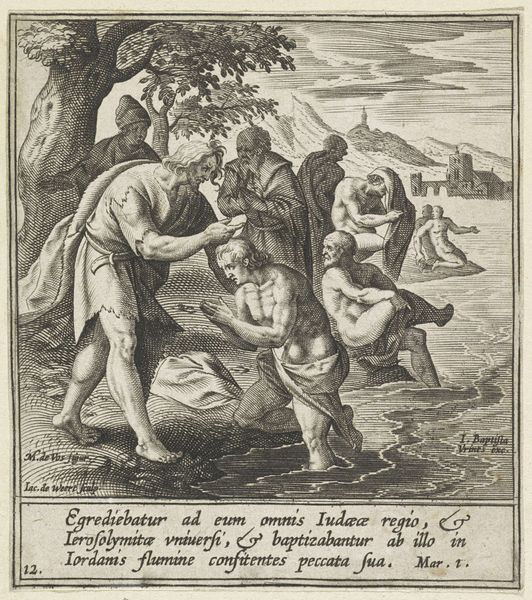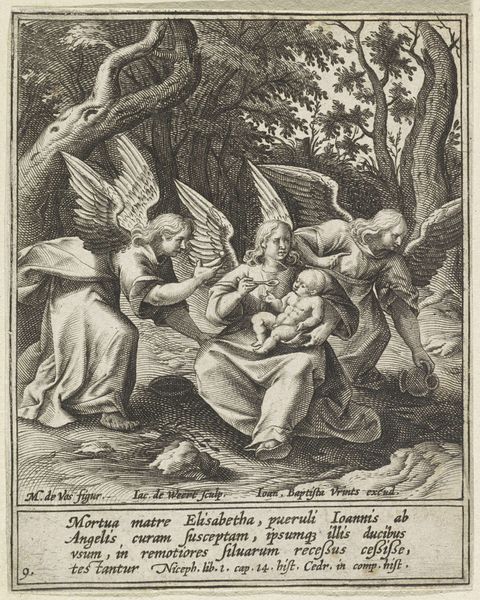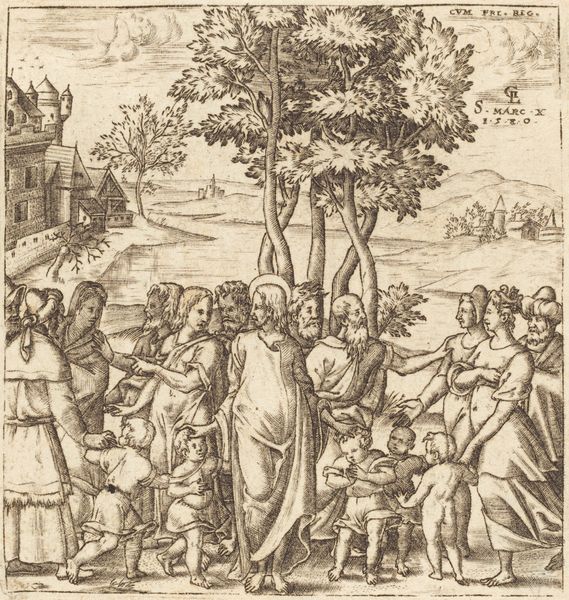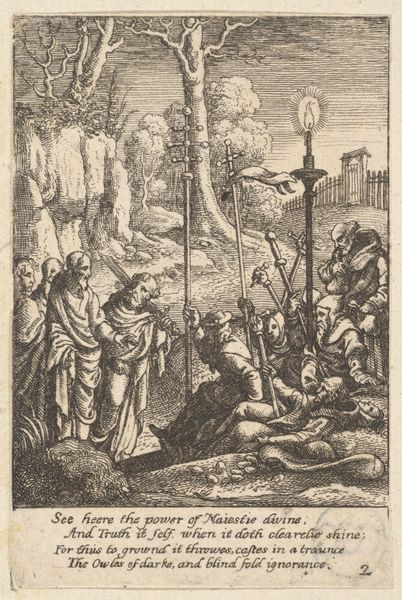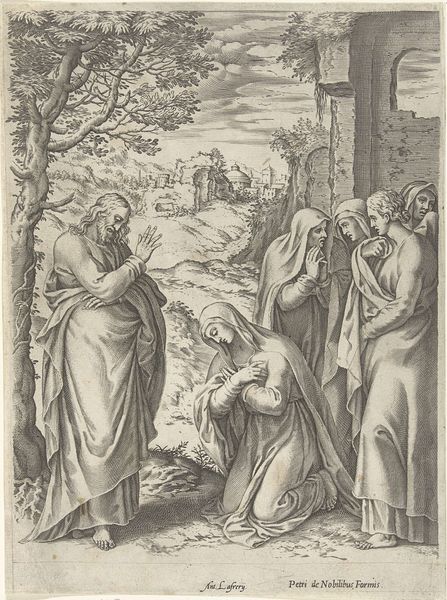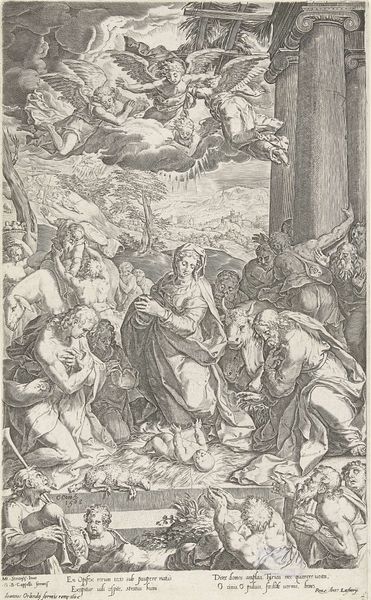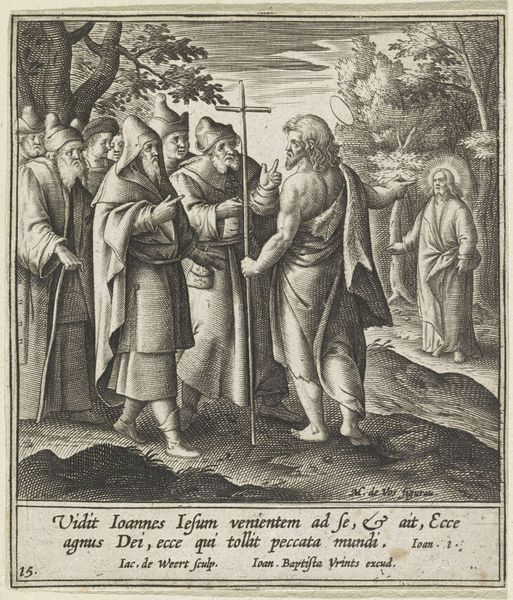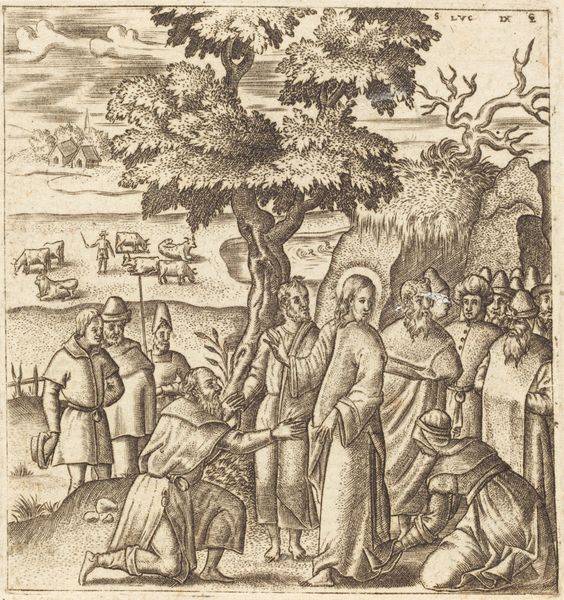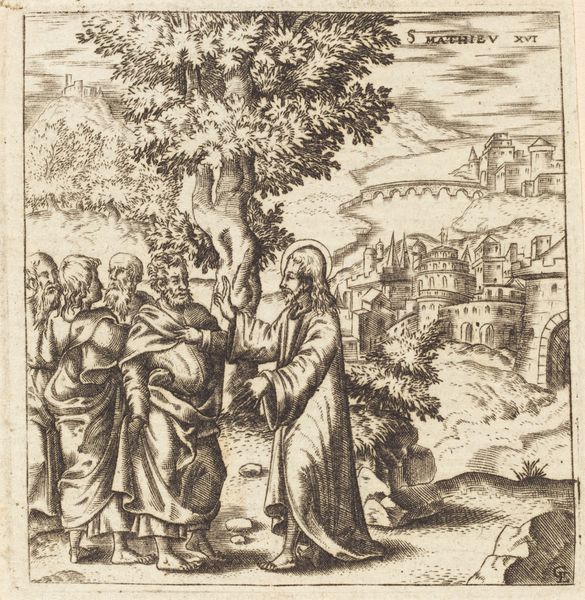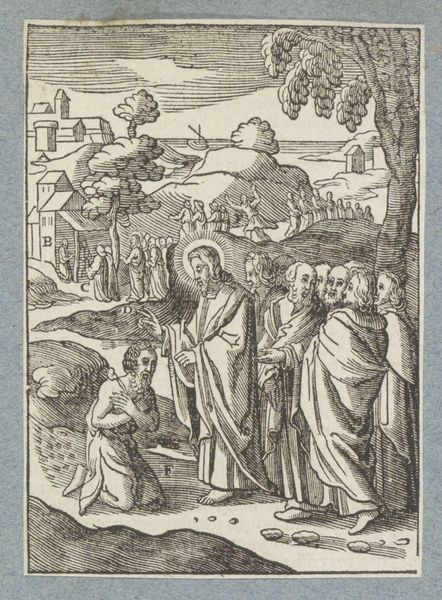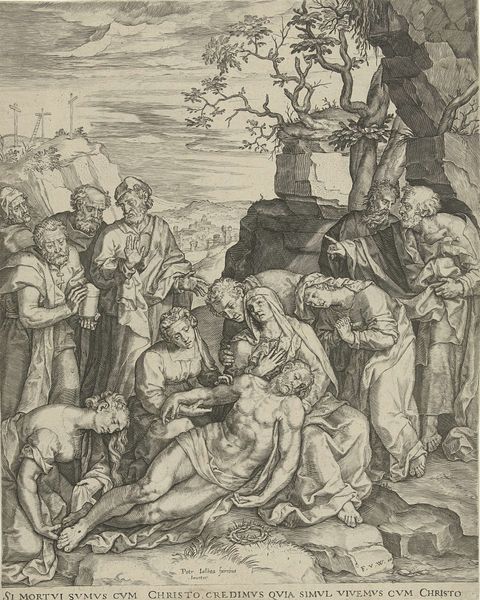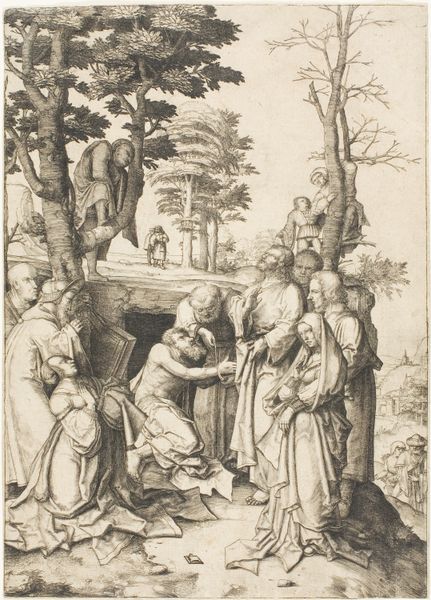
print, engraving
#
narrative-art
# print
#
pen illustration
#
old engraving style
#
figuration
#
line
#
northern-renaissance
#
engraving
Dimensions: height 107 mm, width 91 mm
Copyright: Rijks Museum: Open Domain
Editor: This engraving, titled "Prediking van Johannes de Doper" by Jacob de Weert, was made sometime between 1580 and 1600. It’s quite striking! The stark lines and the density of figures create a dramatic scene, but I’m not sure what to make of it beyond that initial impression. What do you see in this piece? Curator: What I see here is a powerful example of how religious narratives were disseminated and interpreted within a specific socio-political context. This print wouldn't have simply illustrated a biblical scene; it was produced and consumed within a society grappling with religious reformation and the rise of print culture. Consider the text accompanying the image, it’s referencing repentance. How do you think that message resonated at the time? Editor: I guess it would have been particularly poignant. Were prints like this used as tools for religious instruction, or something else entirely? Curator: Precisely! Prints served multiple functions. They democratized imagery, making religious stories more accessible to a wider audience, and offered a means to solidify or question dominant theological interpretations. Also, it is interesting to note how the artist has depicted different groups among the listeners, perhaps speaking to varying social positions or roles within the religious hierarchy of the time. How might those details impact how this piece was viewed? Editor: Hmm, I see your point! Looking at it now, the composition seems less like a straightforward depiction of a Bible story, and more like a statement on religious authority and societal roles. Curator: Exactly. The image’s circulation and reception would have been shaped by prevailing religious ideologies, patronage systems, and censorship policies. These factors inevitably impacted the artist’s choices and the print's subsequent meanings. Editor: Wow, I had only thought about the visual aspects of the engraving before. It’s fascinating to think about all the layers of historical context influencing how it was created and how it would have been received! Curator: It's a great reminder to look beyond the surface and explore the historical currents that shaped art and society.
Comments
No comments
Be the first to comment and join the conversation on the ultimate creative platform.
